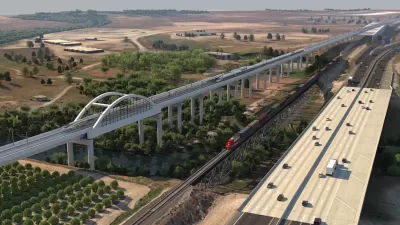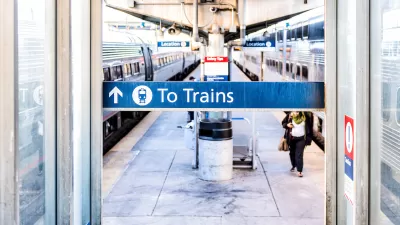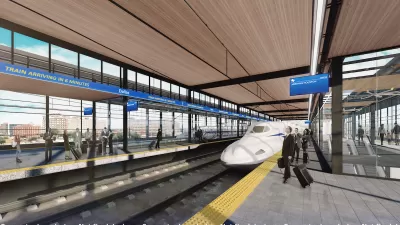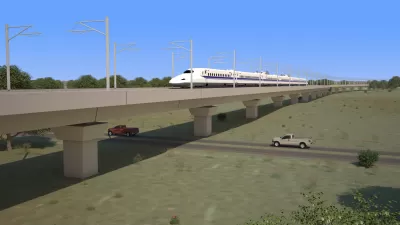Five projects are moving the United States forward on so-called “higher-speed” rail.

While the United States lags considerably behind other developed and developing countries on the construction of high-speed rail, several recent projects, in Florida and between Illinois and Missouri, have made progress on “higher-speed” rail—trains that goes fast, just not quite fast enough to fit the industry’s definition of high-speed rail. (For the record, the Congressional Research Service defines “Higher Speed Rail” as rail services with speeds up to 150 mph.)
A paywalled article by Luz Lazo for the Washington Post updates the progress on five projects underway around the United States to bring new speeds and new routes to the United States’ intercity rail offerings.
The five projects included in the article, with notable facts, funding details, remaining challenges, and timelines provided for each of the projects:
- Amtrak’s Acela high(er)-speed trains will reach 160 mph at various points between Boston and Washington, D.C.
- Brightline West is an electrified rail line that would reach speeds of 186 mph between Rancho Cucamonga, in California, and Las Vegas, in Nevada. Brightline West gained a key federal approval in July 2023.
- California High-Speed Rail is under construction and attracting constant controversy. When and if the project is completed, electrified trains would reach planned speeds of 220 mph between San Francisco and Los Angeles. Later extensions would reach to Sacramento and San Diego.
- Texas High-Speed Rail is battling legal controversy over eminent domain, rising costs, and political opposition, but recently gained new momentum with the possibility of a public-private partnership between Amtrak and Texas Central. The rail line is planned for 200 mph speeds between Dallas and Houston.
- Cascadia High-Speed Rail is actually an international proposition—potentially linking cities in the Pacific Northwest beyond the U.S. Canadian border in Vancouver, British Columbia. According to Luz, project planners aim for Cascadia High-Speed Rail trains to reach 250 mph.
FULL STORY: The 5 higher-speed rail projects taking shape in the U.S.

Alabama: Trump Terminates Settlements for Black Communities Harmed By Raw Sewage
Trump deemed the landmark civil rights agreement “illegal DEI and environmental justice policy.”

Study: Maui’s Plan to Convert Vacation Rentals to Long-Term Housing Could Cause Nearly $1 Billion Economic Loss
The plan would reduce visitor accommodation by 25% resulting in 1,900 jobs lost.

Planetizen Federal Action Tracker
A weekly monitor of how Trump’s orders and actions are impacting planners and planning in America.

Waymo Gets Permission to Map SF’s Market Street
If allowed to operate on the traffic-restricted street, Waymo’s autonomous taxis would have a leg up over ride-hailing competitors — and counter the city’s efforts to grow bike and pedestrian on the thoroughfare.

Parklet Symposium Highlights the Success of Shared Spaces
Parklets got a boost during the Covid-19 pandemic, when the concept was translated to outdoor dining programs that offered restaurants a lifeline during the shutdown.

Federal Homelessness Agency Places Entire Staff on Leave
The U.S. Interagency Council on Homelessness is the only federal agency dedicated to preventing and ending homelessness.
Urban Design for Planners 1: Software Tools
This six-course series explores essential urban design concepts using open source software and equips planners with the tools they need to participate fully in the urban design process.
Planning for Universal Design
Learn the tools for implementing Universal Design in planning regulations.
Caltrans
Smith Gee Studio
Institute for Housing and Urban Development Studies (IHS)
City of Grandview
Harvard GSD Executive Education
Toledo-Lucas County Plan Commissions
Salt Lake City
NYU Wagner Graduate School of Public Service





























